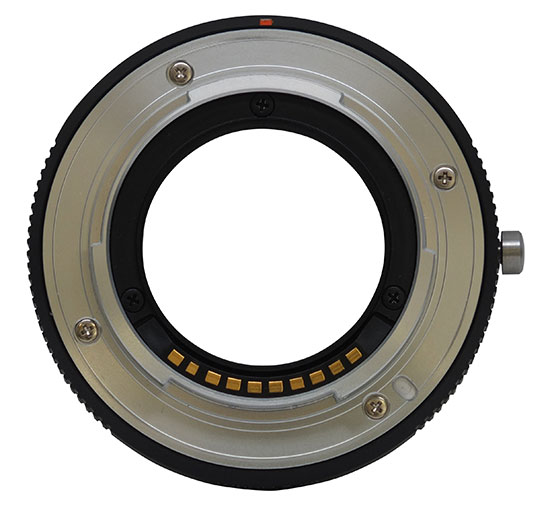Roundup reviews
X-E1 and 18-55mm
bertstephani.com, X-E1 and XF 18-55 lens (click here). Read why says, at the end of his post: “The 18-55 does everything I could reasonably expect from it and even exceeds my expectations. Let’s hope Fuji can continue like this and give us many more great lenses in the (near) future.”
cnet.com review: the good: Superb image quality and low-light performance; faster AF performance than X-Pro1; good ergonomics; versatile pop-up flash. the bad: Lack of a dedicated movie button; AF accuracy needs to be improved; pricier than competing models.
The ePhotozine review can be read here. For some sample pics click here.
The X-E1 and XF 18-55 dc-watch review can be read here (translated version).
The EVF is superb, and my worries over no OVF are unnecessary. Read the first impressions of photomojomike here.
This review is basically a translation of the digitalliving review, and also picutres are from this review. So I will extract just a few things in addition to what I have already translated for you: Read the whole review here. “The EVF provides outstanding, high contrast images. All effects, settings and depth of focus are displayed before exposure. The high frame rate ensures that virtually no delays or stuttering are experienced… Good news for fans of polarizing sunglasses: The image in the viewfinder is visible in both portrait and landscape formats (with the X-Pro1, the viewfinder turns pitch-black). In contrast to the X-Pro1, a locking button which is depressed to release the shutter speed from the “A” position is missing in the X-E1. That’s good news because, in practice, it is almost impossible to turn these dials accidentally — in stark contrast to the exposure compensation button. There’s a subtle change in the remote release. The X-E1 features an electronic remote release along with the mechanical release. Fujifilm provides the RR-80 (click here) which is connected via USB port. The X-E1 offers single shots and sequence shooting with 3 or 6 fps. A panorama function automatically shoots a series of pictures and then puts them together on a widescreen. Auto bracketing is not used to its full potential, unfortunately. It shoots three images with a maximum deviation of plus or minus an aperture — definitely not enough for HDR photography. But there is the hope that Fujifilm will follow up with new firmware. The body alone weighs 350 grams (including battery and card), 100 grams less than the X-Pro1. Eliminating the electronic viewfinder means, however, that the X-E1 is not a rangefinder camera like her big sister but a mirrorless system camera, as the Sony NEX range or the Olympus OM-D E-M5.”
A comprehensive ISO performance test of the X-E1 can be seen on pixinfo.com
X-F1
The popular German newspaper Spiegel.de posted his review about the X-F1. Click here to read it (translated version)
Read the first impressions of thephoblographer here.
dcwatch posted his super-comparison between the X-F1 Olympus XZ-2, Canon PowerShot G15, Sony RX100, Nikon P7700, Panasonic DMC-LX7. There are many sample pics to compare. So take a look and declare your winner!
X-PRO1 (and Fujinon XF 35mm f/1.4 and XF18-55)
Some beautiful X-PRO1 XF35mm sample pics can be seen here at johnnypatience.
Tests, specs, quirks, bugs, deals… apart this, the X-PRO1 can shoot pictures. And one of those photographers out there that enjoyed shooting with it during the music festival in Telluride is mikelyonsphotography (click here to see X-PRO1 shots).
aboutphography.blogspot posted his XF18-55 lens review. The conclusion: “This lens is a winner. Not perfect, but for the price and purpose it is an excellent option particularly if you only want to carry only one lens for your X-Pro1. It may be an even better match for the Fuji X-E1.”
Some pics and one complaint: “I have about the camera is the autofocus in really backlit situations.” Click here to see the shots of alexanderolsson.com.
There are people that are disappointed with this camera. On of these is clearingthevision (click here). Read the reasons why he sells his X-PRO1! Yes, it’s the focus. The focus speed on this lens, but more: “It came to a head in a well-lit cafe in Taos with my daughter. She was sitting across the table from me and had her back to a window about ten feet behind her. I lifted the camera to photograph her, and I got the red box of uncertainty as I tried to focus. I moved focus slightly, got it again, and then I tried an area of greater contrast, and then the lens went back and forth a couple of times, before it finally focussed for me. But by that time, whatever fleeting expression I’d wanted to capture had gone, and I didn’t want to take the photograph any more. I wanted to throw the camera on the floor.” So the focus isn’t fast and reliable. But “if you’re slower and more methodical in your work, or excellent at manually focussing, or maybe all around a better technical photographer than me, then the X-Pro1 might be perfect for you.”
X-PRO1 and the autumn… see some images here.
Fuji X-100
Some people still love the X-100 more than everything else. So I got an email, and the person said: “I know that the X-E1 is the hot camera right now, but the X100 is still the most compact and an amazing camera too.” He send me another “real world” review. The review is not the newest, yes, but it’s well made, and you can see shot taken from Spain to Morocco. For everyone who’s interested, click here to the X-100 review of stuff review.






